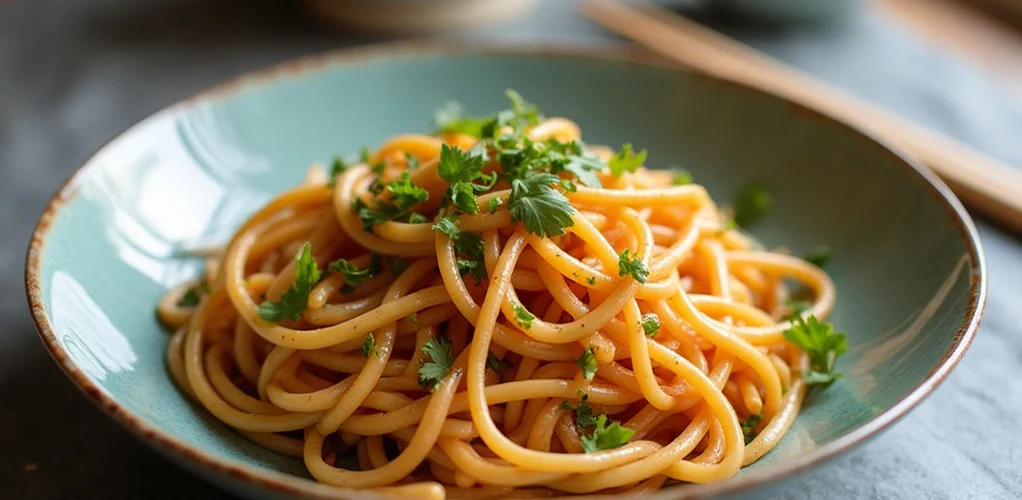
Traditional rice vermicelli noodles are not considered low-carb, containing 42.2 grams of carbohydrates per one-cup serving. While gluten-free, these noodles have a moderate glycemic index rating of 60-70, potentially impacting blood sugar levels. Health-conscious consumers can opt for alternatives like shirataki or konjac noodles, which contain virtually zero carbohydrates and minimal calories. Understanding the nutritional profiles and preparing vermicelli correctly can greatly enhance both taste and dietary outcomes.
Key Takeaways
- Traditional rice vermicelli is not low-carb, containing 42.2 grams of carbohydrates per one-cup serving.
- The glycemic index of rice vermicelli ranges from 60-70, indicating a moderate impact on blood sugar levels.
- Shirataki and konjac noodles are excellent zero-carb alternatives to rice vermicelli, containing only 10 calories per 100g.
- Soybean-based noodles offer a lower-carb option with 4-6 grams net carbs and higher protein content.
- Brown rice vermicelli variants remain high in carbohydrates despite having slightly more protein than white rice versions.
Traditional Rice Vermicelli Nutritional Profile
Rice vermicelli noodles offer a unique nutritional profile that makes them a versatile choice for various dietary needs. A one-cup serving contains 190 calories and 42.2 grams of carbohydrates, while providing essential nutrients like selenium, which supports thyroid function and immune health at 14% of the daily value.
These gluten-free noodles serve as an excellent alternative for individuals with celiac disease or gluten sensitivity. However, they contain relatively modest amounts of protein and fiber, at 3.2 grams and 1.8 grams per serving, respectively.
To create a more nutritionally balanced meal, health-conscious consumers can enhance their rice vermicelli dishes by incorporating fiber-rich vegetables, which helps compensate for the noodles' lower fiber content while maintaining their naturally low-fat properties.
Carbohydrate Content Analysis
Understanding the carbohydrate composition of vermicelli noodles is essential for those monitoring their nutritional intake, as these thin, delicate strands contain approximately 42.2 grams of carbohydrates per cooked cup.
While similar in carbohydrate content to wheat noodles, rice vermicelli offers a slightly lower caloric profile at 190 calories per serving.
For those seeking a low carb noodle alternative, shirataki noodles present a zero-carbohydrate option, making them suitable for ketogenic diets.
The high carbohydrate content in traditional rice vermicelli can cause significant blood sugar fluctuations, which may be problematic for some individuals.
However, incorporating fiber-rich vegetables into vermicelli dishes can help moderate the glycemic impact and provide a more balanced meal solution.
Popular Low-Carb Noodle Alternatives
Konjac noodles have emerged as a leading low-carb pasta alternative, offering zero carbohydrates while providing a satisfying texture similar to traditional noodles. The high-protein content and minimal carbohydrates in modern soybean-based pasta products make them increasingly popular among health-conscious consumers seeking sustainable alternatives. These innovative options, including konjac-based products like Miracle Noodle and soybean varieties, provide versatile cooking applications while supporting various dietary requirements, from ketogenic to gluten-free lifestyles. Shirataki noodles, made from konjac yam, contain less than 1g of carbs and are also gluten-free and vegan, making them an excellent choice for diverse meal plans.
Konjac Noodle Benefits
When considering low-carb alternatives to traditional pasta, the remarkable benefits of konjac noodles make them an increasingly popular choice among health-conscious consumers.
With only 10 calories per 100g and less than 1g of carbohydrates per serving, these gluten-free noodles offer a significant nutritional advantage over conventional pasta options.
The high glucomannan content in konjac noodles provides substantial dietary fiber, which helps create a feeling of satiety and supports weight management goals.
Their quick preparation time of just one minute makes them particularly appealing for individuals maintaining busy schedules.
Additionally, their gluten-free composition makes them an excellent option for those with celiac disease or gluten sensitivity, allowing more people to enjoy pasta-like dishes without compromising their dietary restrictions.
Popular Soybean Pasta Options
Among the diverse array of low-carb pasta alternatives, soybean-based noodles have emerged as a nutritionally superior option for health-conscious consumers seeking to maintain their pasta enjoyment while reducing carbohydrate intake.
Soybean pasta stands out for its impressive nutritional profile, containing just 4-6 grams of net carbs per serving while delivering 20-25 grams of protein. Its gluten-free composition makes it an excellent choice for those with dietary restrictions, and its firm, chewy texture closely mimics traditional wheat pasta.
The quick preparation time of 3-5 minutes adds to its appeal as a convenient meal solution. These characteristics, combined with its ability to hold sauces effectively, make soybean pasta a practical and satisfying option for individuals following low-carb or ketogenic diets.
Shirataki Vermicelli Benefits
Compared to traditional vermicelli noodles, shirataki vermicelli offers significant health advantages, including near-zero calories and minimal carbohydrates, which makes them an excellent choice for weight management and ketogenic diets. These versatile noodles serve as an ideal foundation for numerous dishes, from stir-fries to soups, while maintaining their structural integrity and absorbing the flavors of accompanying ingredients. The gluten-free nature of shirataki vermicelli, combined with its ability to seamlessly replace conventional noodles in recipes, positions it as a leading option for health-conscious consumers seeking to reduce their carbohydrate intake without sacrificing taste or texture. Additionally, shirataki vermicelli can help manage blood sugar levels by minimizing glucose spikes, aligning well with ketogenic dietary practices.
Health Versus Traditional Noodles
For health-conscious consumers seeking alternatives to traditional vermicelli, shirataki noodles present a compelling option with significant nutritional advantages.
When comparing these two noodle varieties, the nutritional differences become immediately apparent, particularly in their carbohydrate and caloric content.
Key nutritional advantages of shirataki over traditional rice vermicelli:
- Near-zero carbohydrates compared to 42.2g per cup in rice vermicelli
- Only 10 calories per 100g versus 190 calories per cup of rice noodles
- Higher fiber content through glucomannan, promoting satiety and digestive health
Both options maintain gluten-free status, but shirataki noodles offer superior benefits for those following ketogenic or low-carb diets while maintaining a similar texture to traditional vermicelli, making them an excellent substitute in Asian cuisine.
Zero-Carb Cooking Applications
While traditional noodle dishes often pose challenges for those following restrictive diets, shirataki vermicelli noodles open up a world of zero-carb cooking possibilities.
These versatile noodles excel in various cooking applications, particularly in Asian-inspired dishes where their rice noodle-like texture proves advantageous.
The zero-carb cooking applications of shirataki vermicelli extend beyond basic substitutions. After proper rinsing to eliminate any residual odor, these noodles effectively absorb the flavors of accompanying sauces and seasonings, making them ideal for stir-fries and soups.
Their virtually carbohydrate-free composition allows individuals following ketogenic or low-carb diets to enjoy pasta-style dishes without compromising their dietary goals.
This remarkable adaptability in different cooking methods and recipes positions shirataki vermicelli as an essential ingredient for health-conscious cooking.
Comparing Different Vermicelli Types
Understanding the nutritional differences between vermicelli types can greatly impact dietary choices and meal planning.
Traditional rice noodle vermicelli contains considerable carbohydrates at 42.2g per cup, while brown rice variants offer slightly higher protein content but remain carb-heavy at 75g per 100g serving.
For those monitoring carbohydrate intake, three key considerations emerge:
- Regular rice vermicelli, while gluten-free, may not suit low-carb diets due to high carbohydrate content.
- Brown rice vermicelli provides additional nutrients but maintains a high carb profile.
- Konjac-based alternatives like shirataki noodles offer zero-carb options with similar texture.
These distinctions highlight how vermicelli choices can greatly affect nutritional goals, particularly for those following specific dietary protocols or seeking to reduce carbohydrate consumption.
Health Impact of Rice Noodles
The health implications of rice noodles present a complex balance of benefits and considerations for consumers seeking nutritious meal options.
While these gluten-free noodles serve as an excellent alternative for those with celiac disease or gluten sensitivity, they contain relatively high carbohydrate content at 42.2 grams per cup. Their nutritional profile reveals modest protein levels and limited fiber content, suggesting the importance of pairing them with protein-rich foods and fibrous vegetables.
Rice noodles offer notable advantages in their low sodium content, supporting cardiovascular health when incorporated into a balanced diet. Additionally, their selenium content contributes to thyroid function and immune system support.
However, consumers should be mindful of portion sizes and consider supplementing meals with additional nutrient-dense ingredients to offset the noodles' nutritional limitations.
Best Ways to Prepare Vermicelli
The preparation method for vermicelli noodles greatly impacts their final texture, with quick-soaking emerging as the superior choice over boiling for ideal results.
Home cooks often make the mistake of overboiling these delicate noodles, leading to a mushy consistency that can ruin the entire dish.
Following package instructions for proper soaking times, combined with careful monitoring during the preparation process, helps achieve the perfect al dente texture while maintaining the noodles' structural integrity.
Quick-Soak Vs Boiling
Proper preparation of vermicelli noodles often comes down to choosing between two distinct methods: quick-soaking or boiling. Quick-soaking rice vermicelli noodles in hot water for 3-5 minutes preserves their texture and prevents mushiness, while boiling can lead to overcooked, soggy results.
After either method, thorough draining is essential to maintain flavor integrity in the final dish.
For ideal results when preparing vermicelli, consider these key factors:
- Noodle thickness determines soaking time – thicker varieties require 30-45 minutes
- Package instructions may vary by brand and should be consulted first
- Flash-frying after soaking can enhance both texture and flavor
The quick-soak method typically proves superior for maintaining noodle structure and achieving the desired consistency in most recipes.
Avoiding Common Cooking Mistakes
Mastering vermicelli preparation requires understanding and avoiding several common pitfalls that can compromise the final dish. When noodles made from rice flour are improperly prepared, they can become mushy or clump together. To achieve the best results, soak vermicelli in hot water for 3-5 minutes rather than boiling, and always check package instructions for specific timing recommendations.
| Mistake | Consequence | Solution |
|---|---|---|
| Over-soaking | Mushy texture | Follow 3-5 min guide |
| Skipping draining | Watery dishes | Drain thoroughly |
| Direct boiling | Loss of structure | Use hot water soak |
| No flash-frying | Bland taste | Quick stir-fry after soaking |
Proper preparation techniques, combined with careful attention to moisture control and cooking time, guarantee perfectly textured vermicelli that enhances rather than detracts from the final dish.
Dietary Considerations and Restrictions
Understanding dietary restrictions plays an essential role when considering vermicelli noodles as part of one's meal plan. Rice noodles contain significant carbohydrates, approximately 42.2 grams per cooked cup, making them unsuitable for low-carb or ketogenic diets. However, they remain a viable option for those with gluten sensitivities due to their gluten-free composition. For those monitoring carbohydrate intake, consider these important factors:
Rice vermicelli's high carbohydrate content makes it incompatible with low-carb diets, requiring careful consideration for those with dietary restrictions.
- Opt for konjac or Shirataki noodle alternatives when following strict low-carb diets.
- Balance rice vermicelli portions with fiber-rich vegetables to help regulate blood sugar impact.
- Calculate portion sizes carefully, as even modest servings contribute substantial carbohydrates to daily intake.
Regular monitoring of blood sugar and ketones is crucial when adjusting dietary plans, especially when considering alternatives like vermicelli, to avoid potential hypoglycemia. These considerations help individuals make informed decisions about incorporating vermicelli into their dietary plans while maintaining their health objectives.
Serving Sizes and Portion Control
Successful meal planning with vermicelli noodles begins with accurate serving size measurements and careful portion control, especially given their concentrated caloric and carbohydrate content. A standard serving size of two ounces dry vermicelli yields approximately one cup when cooked, providing 190 calories.
To maintain healthy portion control while maximizing nutritional benefits, consumers should measure their noodle portions before cooking and complement them with fiber-rich ingredients.
For ideal nutrition and satiety, diners should enhance their vermicelli servings with vegetables, lean proteins, or legumes. However, it's essential to monitor additional ingredients, particularly sauces, as these can greatly impact the meal's overall caloric and carbohydrate content.
Using measuring tools and practicing mindful portioning helps guarantee vermicelli dishes remain within desired dietary parameters.
Glycemic Index Breakdown
When choosing vermicelli noodles for meal planning, consumers should carefully consider their glycemic index (GI) rating of 60-70, which places them in the moderately high range for blood sugar impact.
Understanding this rating is particularly important for those following low-carb diets or managing blood sugar levels.
For ideal blood sugar management when consuming vermicelli noodles, consider these key factors:
- Portion control is essential, as smaller servings result in lower overall glycemic impact.
- Combining noodles with protein and fiber helps slow digestion and moderate blood sugar response.
- Alternative options like shirataki noodles offer zero GI ratings for those requiring stricter blood sugar control.
These considerations become especially relevant when comparing vermicelli to other noodle varieties, making informed meal planning vital for maintaining balanced blood sugar levels.
Restaurant Vs Homemade Options
The choice between restaurant and homemade vermicelli dishes greatly impacts both nutritional content and portion control. When dining out, rice noodles often come in larger portions with added sauces, considerably increasing their carbohydrate content. Preparing vermicelli at home allows for better ingredient control and customization of serving sizes.
| Aspect | Restaurant | Homemade |
|---|---|---|
| Portion Control | Limited control | Full control |
| Sauce Amount | Often heavy | Adjustable |
| Vegetable Content | Variable | Customizable |
| Carb Management | Challenging | Manageable |
Making vermicelli dishes at home enables individuals to incorporate more vegetables and lean proteins while moderating the noodle portion. This approach helps maintain the traditional flavors while creating a more balanced meal with better nutrition and controlled carbohydrate content.
Storage and Shelf Life
Proper storage techniques greatly impact the longevity and quality of vermicelli noodles, with their shelf life extending up to two years when maintained under perfect conditions.
These versatile rice noodles require specific storage practices to maintain their quality and prevent spoilage. When stored correctly in airtight containers away from moisture and sunlight, vermicelli noodles remain a reliable pantry staple.
Key storage guidelines for vermicelli noodles:
- Keep uncooked noodles in a cool, dry place until their expiration date.
- Store cooked noodles in the refrigerator and consume within 3-5 days.
- Transfer opened packages to airtight containers to protect against humidity.
Regular inspection for any signs of deterioration, such as unusual odors or discoloration, helps guarantee food safety and maximum quality throughout their storage period.
Common Recipe Modifications
Modern adaptations of traditional vermicelli recipes offer numerous opportunities to accommodate dietary preferences and nutritional goals while maintaining their signature appeal.
Despite being made from rice flour, vermicelli noodles can be substituted with shirataki or zucchini noodles for those seeking lower-carb alternatives. To enhance nutritional value, adding fiber-rich vegetables like bok choy and carrots creates a more balanced dish. Seasoning modifications, particularly in curry-based recipes, can be adjusted to suit various palates. Additionally, incorporating tofu or tempeh as protein sources aligns well with vegetarian needs while compensating for the noodles' low protein content.
Additionally, experimenting with lighter sauces and creative toppings helps manage carbohydrate intake while preserving the dish's authentic flavors.
Cost Comparison of Noodle Types
A thorough analysis of vermicelli noodle pricing reveals significant variations between store-brand and premium offerings, with rice vermicelli presenting the most economical option at approximately $3.99 per unit.
When comparing price per serving, specialty products like Miracle Noodle's high-protein egg white noodles command a premium position in the market, while traditional wheat-based alternatives typically fall in the mid-range category.
The introduction of health-focused variants, such as Slendier Konjac noodles, has created a distinct pricing tier that reflects their specialized nutritional benefits and production costs.
Price Per Serving Analysis
While consumers often focus on taste and nutritional content when selecting noodles, understanding the price-per-serving relationship reveals significant cost variations among different noodle types.
A price per serving analysis shows that gluten-free rice noodles, at $3.99 per unit, offer moderate value despite higher calories per serving.
- Traditional rice noodles: 190 calories per cup at approximately $0.50 per serving
- Slendier konjac noodles: 10 calories per 100g at roughly $0.75 per serving
- Miracle Noodle protein varieties: Under 100 calories with 10g protein at $1.25 per serving
This comparison demonstrates that while low-calorie alternatives may cost more initially, their reduced caloric content can provide better value for health-conscious consumers seeking weight management options.
Store Vs Brand Pricing
Store pricing variations greatly impact the overall value proposition of vermicelli noodles, with notable differences between generic store brands and premium manufacturers.
Traditional rice vermicelli, easy to prepare in a frying pan and ready to use after a quick soak, offers the most economical choice at $3.99 per unit, with bulk purchasing reducing costs further.
Premium options like Miracle Noodles, marketed for Weight Loss due to their low net carbs, command considerably higher prices despite being thinly sliced like standard white rice noodles.
While specialty products such as organic gluten-free varieties cut into thin strands justify higher costs through certification, budget-conscious alternatives like Slendier konjac noodles provide comparable quality at £2.50 per serving, making them an attractive option for cost-sensitive consumers.
Expert Recommendations and Reviews
Leading nutrition experts and food critics consistently evaluate vermicelli noodles based on their nutritional profile, culinary versatility, and dietary implications.
While traditional rice vermicelli remains popular in Asian cuisine, experts caution about its high carbohydrate content of 42.2g per cup, making it unsuitable for low-carb diets. Health professionals often recommend alternative options for carb-conscious consumers.
Traditional rice vermicelli, while beloved in Asian dishes, contains 42.2g carbs per cup, prompting health experts to suggest low-carb alternatives.
- Nutrition specialists suggest shirataki noodles as a viable substitute, containing virtually zero carbohydrates and only 10 calories per 100g.
- Dietitians note that rice vermicelli's 190 calories per cup and limited protein content may not support satiety goals.
- Food experts recommend Slendier konjac noodles for those seeking traditional noodle texture without compromising low-carb dietary requirements.
Frequently Asked Questions
Are Rice Vermicelli Noodles Low Carb?
Nutritional comparison shows rice vermicelli noodles are not low carb, containing approximately 42.2 grams of carbohydrates per cooked cup, making them a high-carbohydrate food choice compared to alternative options.
Which Is Healthier, Rice Noodles or Vermicelli Noodles?
In a nutritional comparison, brown rice vermicelli noodles generally offer more health benefits, containing higher protein, fiber, and whole grain content than regular rice noodles, despite having more calories.
What Type of Noodles Have the Least Carbs?
Among low carb alternatives, shirataki noodles contain zero carbohydrates, followed by Miracle Noodle High Protein Egg White Noodles with less than 1g, zucchini noodles with 4g, and spaghetti squash with 7g per serving.
Does Vermicelli Have a Lot of Carbs?
Nutritional comparison reveals vermicelli contains significant carbohydrates, with 75g per 100g serving. A typical cooked cup provides 42.2g of carbs, making it unsuitable for low-carb dietary preferences.
Conclusion
Traditional rice vermicelli noodles contain significant carbohydrates, making them unsuitable for low-carb diets. However, alternatives like shirataki vermicelli offer viable options for those monitoring their carb intake. While these substitutes may cost more and require different preparation methods, they provide similar versatility in cooking. Consumers should carefully consider their dietary needs, budget, and cooking preferences when choosing between traditional rice vermicelli and low-carb alternatives.
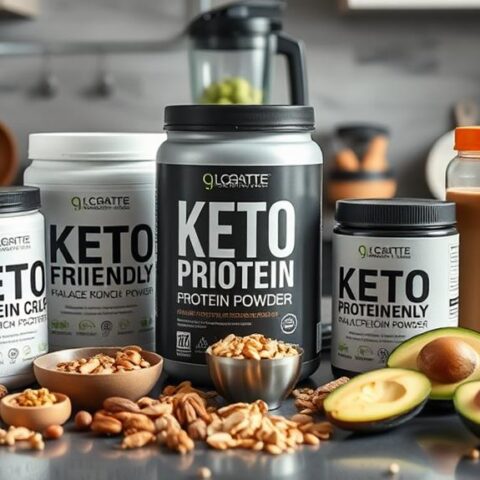

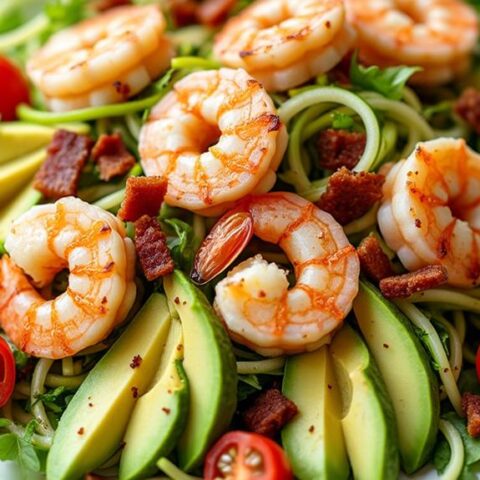


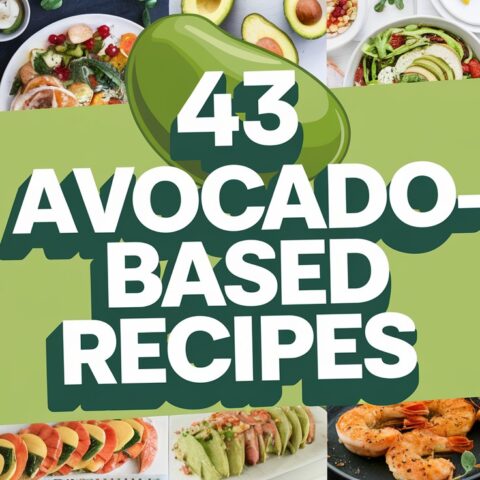
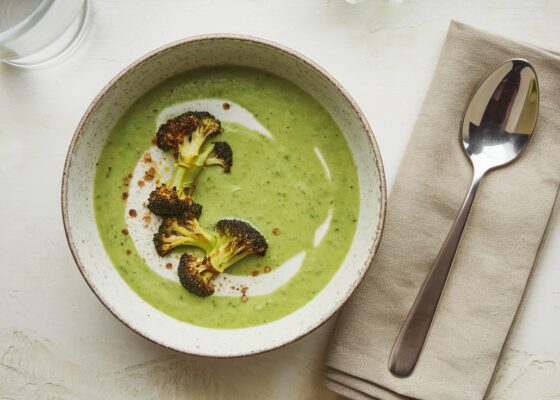
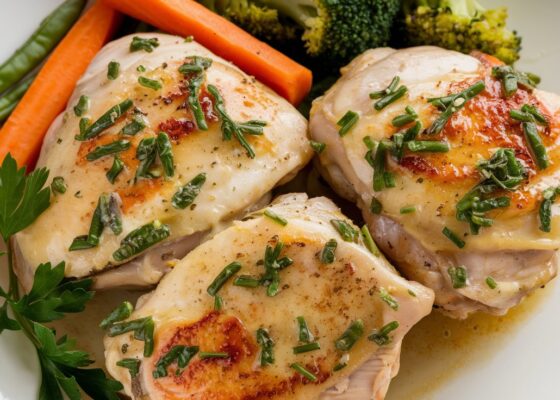
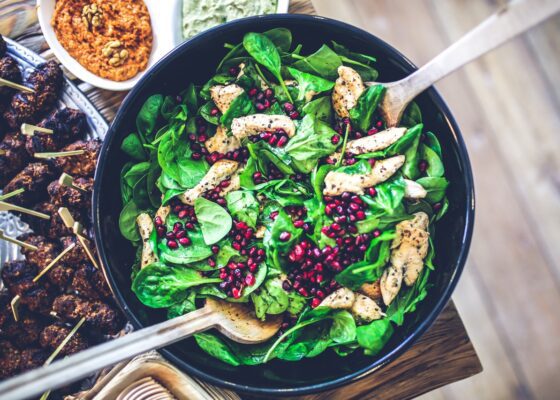
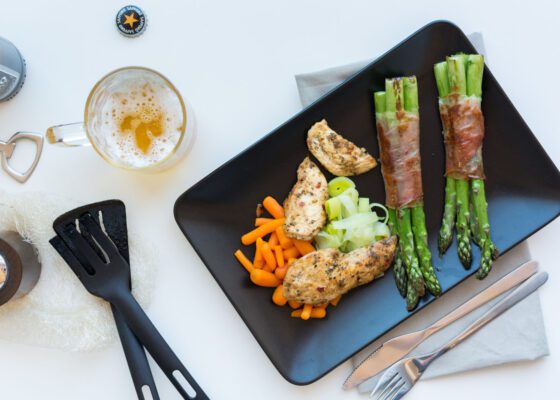
No Comments